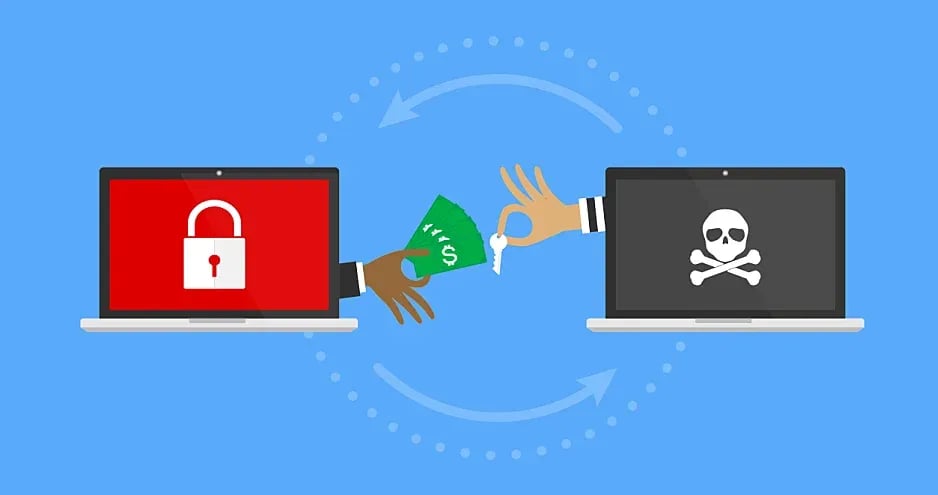Rebuilding Stronger: The Intersection of Cyber Resilience and Civil Affairs
When a community faces devastation — whether from conflict, natural disaster, or economic collapse — the path to recovery is long and complex. It’s easy to focus on what’s visible: the broken roads, the collapsed buildings, the empty schools. But beneath the surface, something less obvious can be just as critical to a community’s survival: its digital infrastructure.
In today’s interconnected world, communities don’t just rely on physical systems — they depend on technology to keep vital services running. When that infrastructure fails or falls victim to a cyberattack, recovery becomes even harder.
I’ve seen this reality from two vantage points: as a technology leader, helping organizations and nonprofits build secure, resilient systems, and as a U.S. Army Civil Affairs officer — part of a specialized unit within Special Operations Command that supports communities in crisis, working alongside local leaders to rebuild what was lost. These two worlds may seem miles apart, but they share a powerful truth: recovery isn’t just about restoring what was. It’s about building something better, something stronger — a foundation that can withstand future threats, whether physical or digital.
Rebuilding is About More Than Brick and Mortar
In the immediate aftermath of a disaster or conflict, the focus is — understandably — on restoring what’s tangible. Roads need to be cleared, hospitals reopened, power grids repaired. But imagine this: a town finally gets its water system running again, only to find that the billing system was hacked, leaving the local utility bankrupt. A hospital restores its emergency room, only to have patient records locked down by ransomware. A city hall reopens, but its data systems have been corrupted, leaving officials unable to process permits or manage public services.
These aren’t hypothetical scenarios — they’re real events that have played out in struggling communities worldwide. Cyberattacks don’t stop for recovery efforts. In fact, vulnerable, rebuilding communities become even more attractive targets for bad actors.
It’s a sobering truth: without a secure digital backbone, physical recovery can crumble. And that’s where technology leadership and Civil Affairs share a surprising connection.
The Strategic Role of Civil Affairs in Rebuilding Communities
Civil Affairs is a critical and strategic component of the Army's Special Operations Command. While often associated with humanitarian efforts, our role extends far beyond immediate relief. As a 38G/6R officer, I’m part of a specialized team trained to integrate both military strategy and civilian expertise to support the overarching goals of Special Forces missions.
Our work involves collaborating closely with local governments, community leaders, and organizations to ensure recovery efforts align with the specific needs and realities of the people we serve. This partnership is key to helping communities not only recover but thrive again. We help rebuild physical infrastructure, restore governance systems, and foster economic recovery, always with an eye toward long-term stability.
This strategic collaboration with local leaders is what makes Civil Affairs integral to Special Forces missions. We don’t just bring expertise; we also understand the local context, culture, and politics, allowing us to build meaningful partnerships that go beyond mere reconstruction. These efforts contribute to greater stability and enable communities to re-establish themselves in a way that’s sustainable and resilient.
Cybersecurity: The Unseen Lifeline
The same principles that guide Civil Affairs — collaboration, empowerment, sustainability — apply directly to cybersecurity. When a municipality’s systems are compromised, it’s not just an IT issue. It’s a human issue. Emergency services can’t respond. Hospitals can’t access medical records. Small businesses can’t process payroll. Schools can’t teach.
In these moments, cybersecurity isn’t about technology — it’s about people’s ability to live, work, and rebuild.
Much like Civil Affairs embeds experts to help communities reconstruct physical infrastructure and governance, cybersecurity professionals must become embedded in recovery efforts. They need to work alongside local leaders, understand how services are delivered, and help create systems that are not only secure but resilient — able to adapt and survive in the face of evolving threats.
It’s not enough to install firewalls and call it a day. Just as Civil Affairs builds relationships to empower communities, cybersecurity efforts must build local expertise. Municipal employees need training to recognize phishing attempts and social engineering tactics. Governments need contingency plans to maintain essential services during an attack. Small businesses need affordable, practical ways to protect their data without sacrificing growth.
A Future Built on Resilience
Rebuilding a community — whether after war, disaster, or economic hardship — is about more than restoring what was lost. It’s about creating a foundation that can withstand whatever comes next. Civil Affairs has spent decades proving that lasting recovery isn’t about temporary fixes — it’s about empowering people to take control of their own futures.
The same is true for cybersecurity. Municipalities can’t afford to treat digital resilience as an afterthought. They need trusted partners who understand both the technology and the human side of recovery — leaders who know how to build secure systems while fostering local ownership and trust.
My journey, from technology leadership to Civil Affairs and back again, has shown me that recovery isn’t just about technology or infrastructure. It’s about people — their hopes, their resilience, and their right to a safer, stronger future. And whether it’s through a secure network or a rebuilt town square, that future starts with empowering the communities who need it most.
Bibliography
Books
- McFate, S. (2019). The New Rules of War: Victory in the Age of Durable Disorder. HarperCollins.
- Kilcullen, D. (2013). Out of the Mountains: The Coming Age of the Urban Guerrilla. Oxford University Press.
- Sanger, D. E. (2018). The Perfect Weapon: War, Sabotage, and Fear in the Cyber Age. Crown.
- Lamb, C. J., & Cinnamond, S. M. (2017). The Making of the Humanitarian: The Role of Civil Affairs in the Global War on Terror. National Defense University Press.
Academic Journals
- Thompson, J., & Davis, P. (2018). Civil-Military Cooperation and the Role of Civil Affairs in Stability Operations.Journal of International Peacekeeping, 22(4), 354-378.
- Rid, T., & Buchanan, B. (2015). Attributing Cyber Attacks. Journal of Strategic Studies, 38(1-2), 4-37.
- Fisher, D. M. (2014). The Human Domain and Civil Affairs: Building Strategic Influence Through Engagement.Military Review, 94(5), 26-33.
Government and Military Publications
- United States Army Special Operations Command (2020). Civil Affairs Operations Field Manual (FM 3-57).
- Department of Homeland Security (2021). Cybersecurity Best Practices for Municipalities.
- Joint Chiefs of Staff (2018). JP 3-57: Civil-Military Operations.
Reports and Case Studies
- RAND Corporation (2022). Building Digital Resilience: Lessons for Municipal Governments.
- Center for Strategic and International Studies (CSIS) (2019). Significant Cyber Incidents Report.
- United Nations Development Programme (UNDP) (2021). Rebuilding Resilient Communities: The Role of Local Governance in Post-Conflict Recovery.











